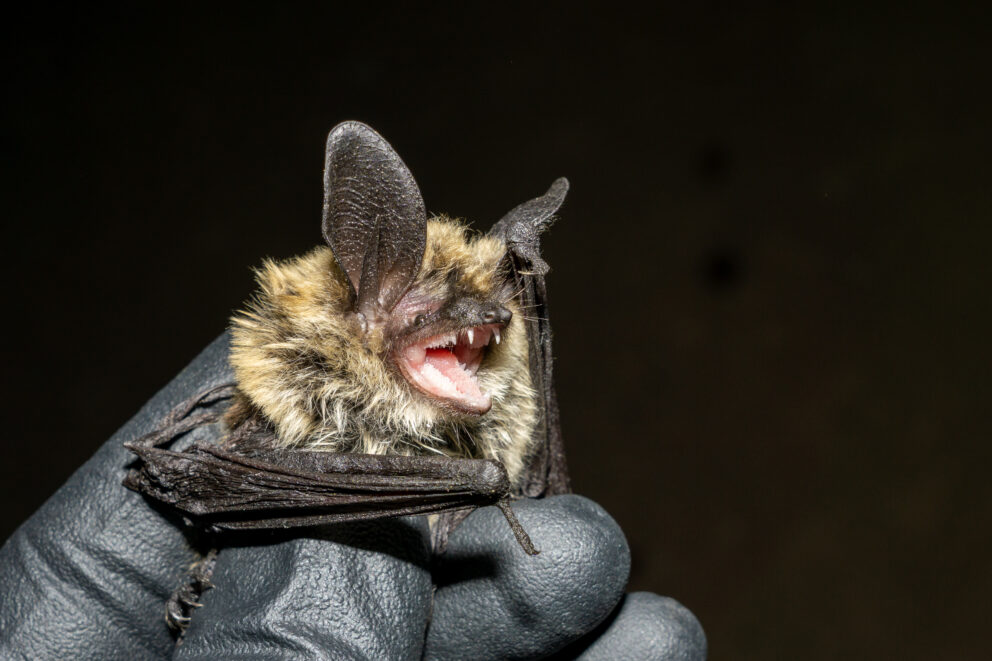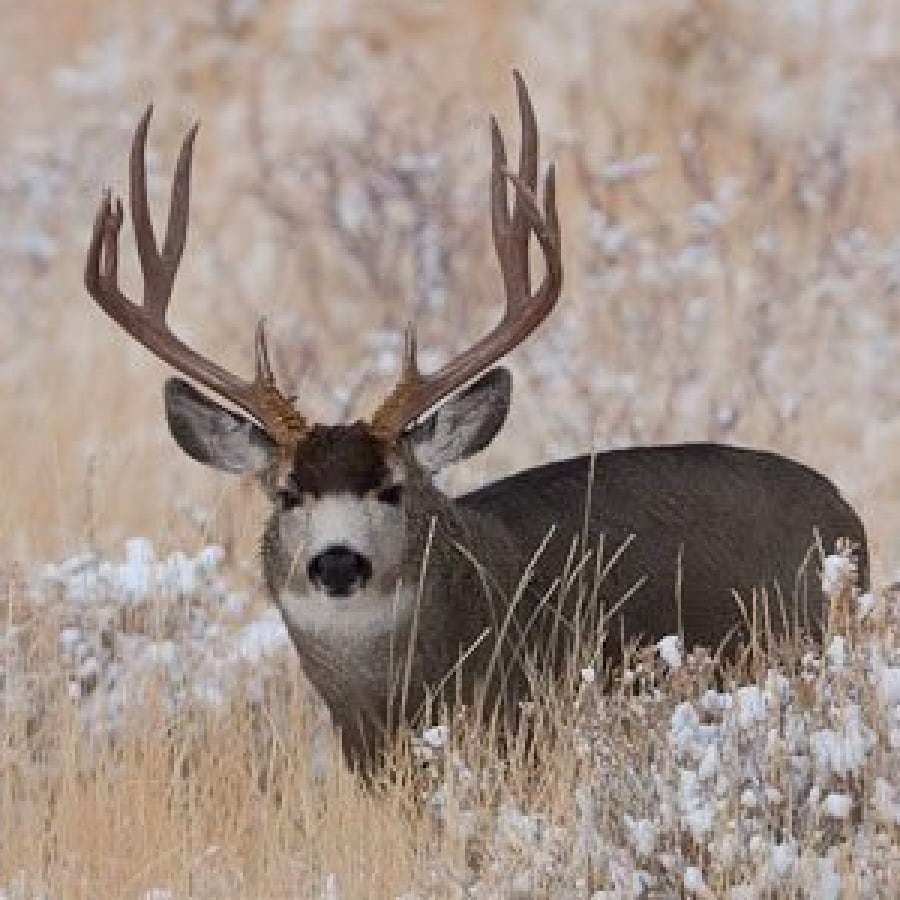- SCIENTIFIC NAME
- Myotis evotis
- CLASSIFICATION
- Mammal
- LIFE SPAN
- 2-10 Years
- STATE CONSERVATION STATUS
-
- Priority Species
- FEDERAL CONSERVATION STATUS
- Least Concern
- GAME STATUS
- Non-Game
- GAME TYPE
- None
- Washoe
- Humboldt
- Pershing
- Churchill
- Mineral
- Lyon
- Douglas
- Carson City
- Storey
- Elko
- Lander
- Eureka
- White Pine
- Esmeralda
- Nye
- Lincoln
- Clark
Habitat & Range
The Western Long-eared Bat’s range stretches from southwestern Canada to the western United States and into Baja California. The species is found across the state of Nevada, typically in coniferous-forested habitats and elevations from 7,000 – 8,500 feet.
- Alpine forests of the Sierras
- Pinyon juniper forests
- Upland Forests
Threats
- Habitat Loss
- Human Development
- White-nose Syndrome
Natural History
The Western Long-eared Bat eats moths, beetles, and flies. They will forage insects in the air, on the ground, and off of foliage along rivers and streams in forested habitats. Roosting sites can differ, depending on the time of day, with trees primarily being used during the day and caves and mines at night. Reproduction occurs from June to July. Females will form small maternity colonies and will produce one young per year.
This is a species of bat that is susceptible to white-nose syndrome, a highly contagious and deadly fungus. So far white-nose syndrome has not been found in Nevada, but NDOW continues to monitor bat populations.
Fun Facts














